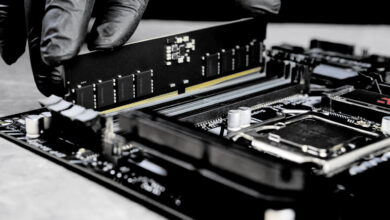The Potential of 5G Networks in Transforming Connectivity and Communication
In recent years, the advent of the fifth-generation (5G) mobile network technology has generated a lot of buzz in the tech industry. Unlike its predecessor, 4G, which was primarily focused on enhancing mobile broadband, 5G networks promise to revolutionize communication and connectivity in ways that were previously impossible. This article explores the potential of 5G networks in transforming connectivity and communication.
What is 5G Technology?
5G technology is the fifth-generation mobile network technology that offers faster and more reliable communication and connectivity than its predecessors. It is designed to support a range of new and emerging technologies, such as the Internet of Things (IoT), virtual reality, and augmented reality. 5G networks operate on a higher frequency spectrum than 4G, which means they can carry more data at faster speeds.
The Key Benefits of 5G Networks
Enhanced Network Speed and Capacity
5G networks offer much faster download and upload speeds than 4G networks. They can provide peak download speeds of up to 20 gigabits per second (Gbps), which is 20 times faster than 4G. This means you can download a full-length HD movie in just a few seconds.
Reduced Latency
Latency refers to the time it takes for a data packet to travel from one device to another. 5G networks have much lower latency than 4G networks. This means that there is much less delay between sending and receiving data. This is especially important for applications that require real-time data transfer, such as self-driving cars and remote surgery.
Improved Network Reliability
5G networks are designed to be more reliable than 4G networks. They have multiple built-in redundancies, which means that even if one part of the network fails, the rest of the network can still function.
The Potential of 5G Networks in Transforming Connectivity and Communication
Autonomous Vehicles
5G networks have the potential to revolutionize the automotive industry by enabling the development of autonomous vehicles. Self-driving cars require real-time data transfer, which is only possible with 5G networks’ low latency and high bandwidth capabilities. With 5G, cars can communicate with other cars on the road, traffic lights, and road infrastructure to provide a safer and more efficient driving experience.
Telemedicine
Telemedicine refers to the provision of medical services over the Internet or other telecommunications technologies. With 5G networks’ low latency and high bandwidth capabilities, healthcare providers can deliver real-time video consultations and monitor patients remotely. This can help reduce healthcare costs and improve patient outcomes, especially in rural or remote areas where access to healthcare services is limited.
Smart Cities
5G networks have the potential to transform cities into smarter and more efficient places to live. With 5G, city infrastructure such as traffic lights, streetlights, and public transportation can be connected and controlled remotely. This can help reduce traffic congestion, improve energy efficiency, and enhance public safety.
Virtual and Augmented Reality
Virtual and augmented reality (VR/AR) technologies have the potential to transform the way we work, learn, and play. However, these technologies require high bandwidth and low latency, which are only possible with 5G networks. With 5G, VR/AR applications can provide a more immersive and interactive experience, allowing users to interact with digital objects in real time.
Internet of Things
The Internet of Things (IoT) refers to the network of physical objects that are connected to the Internet, such as smart home devices, wearable technology, and industrial equipment. 5G networks can provide the low latency and high bandwidth required to support these devices. With 5G, IoT devices can communicate with each other and transmit data in real time, which can enable a range of applications, from smart homes to industrial automation.
Gaming and Entertainment
The gaming and entertainment industries are expected to benefit greatly from 5G networks’ capabilities. With 5G, users can enjoy high-quality, low-latency gaming experiences on mobile devices, and streaming services can deliver high-quality content in real time.
Challenges and Limitations of 5G Networks
While 5G networks have the potential to transform connectivity and communication, there are still several challenges and limitations that need to be addressed. One major challenge is the high cost of building and deploying 5G networks. Another challenge is the limited coverage area of 5G networks, which means that rural and remote areas may not have access to 5G networks for some time.



